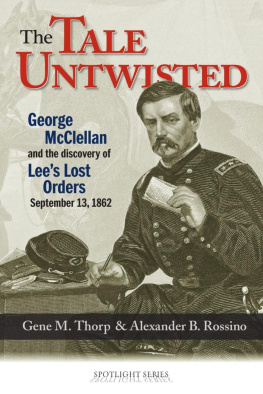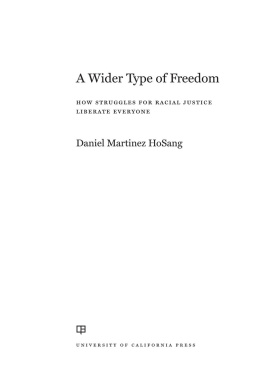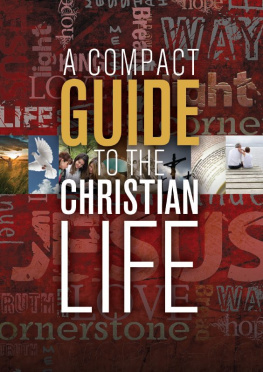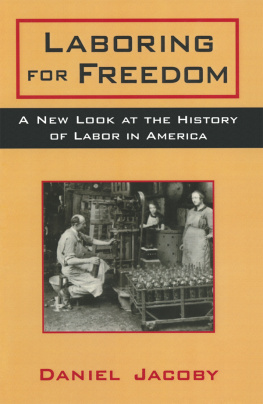University of Virginia Press
2017 by the Rector and Visitors of the University of Virginia
All rights reserved
Printed in the United States of America on acid-free paper
First published 2017
9 8 7 6 5 4 3 2 1
Library of Congress Cataloging-in-Publication Data
Names: Thorp, Daniel B., author.
Title: Facing freedom : an African American community in Virginia from Reconstruction to Jim Crow / Daniel B. Thorp.
Description: Charlottesville : University of Virginia Press, 2017. | Series: The American South series | Includes bibliographical references and index.
Identifiers: LCCN 2017025186 | ISBN 9780813940731 (cloth : alk. paper) | ISBN 9780813940748 (ebook)
Subjects: LCSH: African AmericansVirginiaMontgomery CountyHistory. | African AmericansVirginiaMontgomery CountyBiography. | Montgomery County (Va.)Biography.
Classification: LCC F232.M7 T47 2017 | DDC 305.896/0730755785dc23
LC record available at https://lccn.loc.gov/2017025186
Cover photo: James and Harriett Carr late in the nineteenth century. (Used with the permission of Lois C. Teele)
ACKNOWLEDGMENTS
I WOULD LIKE TO EXPRESS my deep appreciation for the support I have received over the years from so many members of Montgomery Countys African American community. I especially want to thank Lois Carter Teel, Gladys Sokolow, James Dow, Charles Sonny Johnson, Nan and John Hairston, Aubrey and Mary Mills, Jessie Eaves, Sarah Carter, Raymond Bishop, N. L. Bishop, Richard Wade, and Cora Pack for the information they shared with me and for the help and encouragement they provided. I also owe a debt to the Rev. Jimmie Price, a dogged researcher into the history of northwestern Montgomery County with whom I often crossed paths at the courthouse and who shared willingly his deep knowledge of local history and his profound respect for the contributions that African Americans have made to it. I would also like to thank Erica Williams, Montgomery Countys Clerk of the Circuit Court, and salute several current or former members of her staff. For almost five years, I spent every Friday in the clerks office, where Laura Wren, Bridget Adams, and Allen Worrell provided both moral support and practical assistance. At Virginia Tech, I want to thank Peter Wallenstein for his help and support over the years and my department, the College of Liberal Arts and Human Sciences, and the Office of the Provost for financial support toward the publication of this work. Finally, I wish to thank my wife, Elizabeth, for letting me spend so much time in an alternate world that often seemed to exist only in the mass of papers scattered around our basement.
INTRODUCTION
THE SEED FOR THIS BOOK was planted in 1981, though I did not realize it at the time. I was a graduate student then, still finishing my dissertation, and thinking only of Moravians in Colonial North Carolina. I had recently been hired to fill a one-year position at Virginia Tech as a visiting instructor of history, and my wife and I had moved to Blacksburg from the Maryland suburbs of Washington, D.C. While I had been working on my dissertation, my wife had been supporting us as an elementary school teacher in Prince Georges County, and soon after we moved a former colleague of hers came with her children to spend the weekend in Blacksburg. Sometime during their visit we all went to McDonalds for lunch. Looking around the restaurant, our friends ten-year-old daughter asked a question that may have occurred to all of us but that only a child was brave enough to ask: Why do they call it Blacksburg? Everyone here is white.
Blacksburg was certainly white, but that was hardly unusual in Montgomery County in 1981. Only about 4 percent of the countys population was African American at the time, and few members of that small community lived in Blacksburg. Moreover, the local narrative suggested that Montgomery County had always been that way, that the region had been settled by sturdy, yeoman farmersGermans, English, and Ulster Scotswho had worked the land themselves and rarely held slaves. This narrative had never included many African Americans. Few historians had ever paid much attention to the countys African American community, and histories
Over the next decade, however, I gradually came to see that this local narrative contained significant elements of myth and that a key element of Montgomery Countys early history had been nearly forgotten by those writing its history. My term as a visiting instructor ended in 1983, and I left Blacksburg for several years but returned in 1986 as a member of the regular faculty in Virginia Techs history department. In that capacity I often taught an undergraduate course in research methods and began to incorporate local history and local sources into the class. In doing so, I first learned that Montgomery County had a significant African American population during the nineteenth century. I was surprised to find that in 1860 nearly a quarter of the countys residents had been black and that more than a fifth had been slaves. Moreover, a number of those African Americans had remained in the county for years after the Civil War. While many of their descendants did move north in the late nineteenth and early twentieth centuries, others remained and formed the core of a small but proud black community that could trace its roots in the county back more than two centuries. This realization, however, is not what led me to write this book. That took Nikki Giovanni.
By 2008, Nikki was an Alumni Distinguished Professor at Virginia Tech. She was also a force to be reckoned with. When she publicly challenged the university to deepen its connection to the local African American community, the administration took notice. One early sign of this was an effort by university officials to work with alumni of the Christiansburg Institute, a black school that had operated in the county until 1966, to preserve the history of that institution and to make its story more widely known. I was then the chair of Virginia Techs history department, so I was a logical candidate to serve on a university working group that also included members of the Christiansburg Institute Alumni Association and representatives of several local governments. Together, we started looking for ways to meet Nikkis challenge. As a historian, I became increasingly interested in the story of the African American community that had supported the Christiansburg Institute and, as a teacher, I started thinking maybe I could find enough information about that community to offer a public lecture as part of an ongoing local history series. Once I began looking, though, I quickly realized that there was more than enough material for a lecture. I began thinking about an article, and before long I knew there was a book in it.
And I knew exactly what sort of book I wanted to write. I had originally trained as an American colonial historian and did so in the wake of John Demos, Kenneth Lockridge, James Lemon, and Darrett and Anita Rutman. I cut my historical teeth on their groundbreaking community studies, and it quickly became clear to me that the history of Montgomery Countys African American community offered a wonderful opportunity for just such a study. The county has existed as a corporate entity since 1776 and has generated an impressive body of records. More importantly, it has never suffered a major loss of those records. No flood, no fire, no invading army has ever destroyed the courthouse, and while some records have gone missing over the years, most have survived. Deeds, wills, county court minutes, criminal and civil court records, indentures, election records, censuses, and the records of births, deaths, and marriages all remain intact and available in the office of the court clerk. Complementing the countys rich public record is a range of other sources. Private correspondence, business records, the records of fraternal organizations and churches, school records, newspapers, military and pension records, records of the Freedmens Bureau and those of various philanthropic agencies during and after Reconstruction, and oral histories have also survived to help tell the story of African Americans in Montgomery County. From these scattered pieces it is possible to construct a remarkably complete picture of African American life in Montgomery County.






